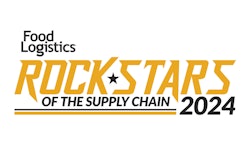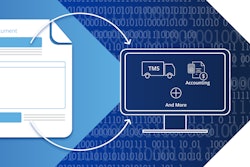
In today's highly dynamic and competitive business environment, efficient supply chain management has become a critical factor for organizations striving to achieve success and gain a competitive edge. Among the various strategies and practices that contribute to effective supply chain management, sales and operations planning (S&OP) stands out as a crucial process. S&OP serves as the cornerstone for aligning sales forecasts with operational capabilities, enabling organizations to optimize their resources, enhance customer satisfaction, minimize costs, and respond proactively to changing market conditions. An effective S&OP process connects all areas and departments of the organization to ensure the entire organization is operating on the same plan. The importance of S&OP in supply chain management and its multifaceted benefits cannot be understated.
At its core, supply chain management involves the seamless coordination of various activities, such as procurement, production, inventory management, and distribution, to meet customer demand efficiently. However, without an integrated planning process, organizations may struggle with internal communication and imbalances between demand and supply, leading to issues such as stockouts, excess inventory, poor customer service, and increased costs. This is where S&OP plays a pivotal role by providing a structured framework that brings together cross-functional teams to collaborate, synchronize their activities, and align their plans with the organization's strategic objectives. However, while the S&OP process has improved communication and synchronization throughout the entire manufacturing company and broken down some traditional walls, in today’s market, the process needs to expand. For companies to compete today, the S&OP process needs to be deployed throughout the entire ecosystem. The S&OP process is no longer considered to be just for improving internal planning processes and operations. S&OP has to be throughout an entire business's ecosystem, breaking down some walls isn't enough.
S&OP facilitates effective decision-making by integrating inputs from sales, marketing, finance, operations, and other key departments within an organization, but it is also important to include key players outside of the organization as well. By considering historical data, market intelligence, customer trends, and demand forecasts, S&OP allows organizations to develop a unified sales and operations plan. This plan serves as a roadmap that guides the allocation of resources, capacity planning, production scheduling, inventory management, and distribution strategies. By aligning these aspects, organizations can optimize their operations and ensure that demand is met efficiently, thereby improving customer satisfaction and loyalty.
A key benefit of S&OP is its ability to enhance supply chain visibility and enable proactive decision-making. Through the collaborative nature of the process, organizations gain a holistic view of their supply chain, including demand patterns, production capabilities, inventory levels, and potential bottlenecks. This visibility enables organizations to identify and address potential issues in advance, such as capacity constraints, raw material shortages, or disruptions in the supply chain. With this proactive approach, organizations can mitigate risks, avoid costly disruptions, and maintain a competitive advantage in the market.
S&OP also plays a vital role in cost optimization within the supply chain. By aligning sales forecasts with production capabilities, organizations can optimize inventory levels, minimize stockouts, and reduce excess inventory holding costs. Furthermore, the collaborative nature of S&OP allows for improved coordination between sales and operations, leading to reduced expediting costs, improved production efficiencies, and optimized resource utilization. This holistic approach to planning helps organizations achieve cost savings while ensuring that customer demand is fulfilled effectively.
In addition to operational benefits, S&OP provides strategic advantages to organizations. By integrating sales and operations planning with the overall business strategy, organizations can align their efforts towards achieving long-term objectives. S&OP helps organizations identify growth opportunities, assess the impact of market dynamics on the supply chain, and make informed decisions regarding investments in infrastructure, technology, and capacity expansion. With a well-executed S&OP process, organizations can adapt to changing market conditions, seize new business opportunities, and strengthen their competitive position.
Challenges in extending S&OP
Extending S&OP beyond its initial scope can present several challenges for organizations. While S&OP is a proven process that brings numerous benefits to supply chain management, expanding its reach across the entire organization requires careful consideration and effort. Some of these challenges include:
● Organizational alignment. Expanding S&OP involves engaging various departments and functions within the organization, including sales, marketing, finance, operations, procurement, and logistics. Achieving alignment among these different stakeholders can be challenging, as each department may have its own priorities, objectives, and metrics. Overcoming siloed thinking and fostering cross-functional collaboration requires strong leadership, effective communication, and a shared understanding of the benefits that S&OP can bring to the entire organization.
● Data integration. Extending S&OP often necessitates integrating data from multiple sources, such as enterprise resource planning (ERP) systems, customer relationship management (CRM) platforms, and market intelligence tools. However, organizations may face difficulties in consolidating and harmonizing data from disparate systems, leading to data inconsistencies, inaccuracies, and delays. Ensuring data integrity and establishing robust data governance processes are essential for successful S&OP expansion.
● Cultural shift. Extending S&OP requires a cultural shift within the organization, moving from a functional mindset to a collaborative and integrated approach. This shift may encounter resistance from employees who are accustomed to working within their own functional boundaries. Changing mindsets, fostering a culture of collaboration, and promoting a shared vision of S&OP as a strategic initiative can be challenging but is crucial for its successful implementation and extension.
● Process complexity. As S&OP expands, the complexity of the planning process increases. The involvement of more stakeholders, the integration of additional data sources, and the need to consider a broader range of factors can make the process more intricate. Organizations need to carefully design and streamline the extended S&OP process to maintain its effectiveness and avoid overwhelming participants with excessive complexity.
● Technology requirements. Extending S&OP may require investments in technology infrastructure and tools to support the expanded planning process. Organizations may face challenges in identifying the right technology solutions, integrating them with existing systems, and ensuring their usability and scalability. Adequate training and change management efforts are essential to ensure successful adoption and utilization of the technology supporting the extended S&OP process.
Benefits of extending S&OP
Despite the challenges, expanding S&OP across the organization can bring several significant benefits to supply chain management and overall business performance. By extending the reach of S&OP beyond its initial scope, organizations can unlock new opportunities and improve their competitive advantage. Here are some key benefits of expanding S&OP:
● Improved cross-functional collaboration. Expanding S&OP encourages collaboration and communication among various departments and functions within the organization. By involving stakeholders from sales, marketing, finance, operations, and other relevant areas, organizations can break down silos and foster a culture of cross-functional teamwork. This collaboration enables a comprehensive understanding of market dynamics, customer demands, and operational constraints, leading to better decision-making and more effective planning.
● Enhanced demand-supply alignment. With an expanded S&OP, organizations can achieve better alignment between demand forecasts and supply capabilities. By involving sales and marketing teams in the planning process, organizations gain access to valuable market intelligence and customer insights. This integration of demand-side information with supply-side considerations enables organizations to synchronize their production and distribution plans with customer requirements, reducing stockouts, improving on-time delivery, and enhancing customer satisfaction.
● Increased agility and responsiveness. Expanding S&OP allows organizations to proactively respond to market changes and customer demands. By considering multiple scenarios, conducting what-if analyses, and evaluating various supply chain strategies, organizations can anticipate potential disruptions and make timely adjustments to their plans. This agility enables organizations to capitalize on emerging opportunities, mitigate risks, and adapt to changing market conditions more effectively.
● Optimized resource utilization. With an extended S&OP process, organizations can optimize their resource utilization across the supply chain. By integrating sales forecasts, production plans, inventory management, and procurement strategies, organizations can align their resources and capacities to meet demand efficiently. This optimization helps reduce excess inventory, minimize stockouts, improve production efficiencies, and maximize the utilization of key resources such as labor, equipment, and warehouse space.
● Strategic business alignment. Expanding S&OP facilitates a stronger alignment between supply chain planning and the organization's overall business strategy. By involving finance, senior management, and strategic decision-makers in the S&OP process, organizations can ensure that their supply chain plans are closely linked to their long-term objectives. This alignment enables organizations to allocate resources, make investment decisions, and prioritize initiatives that support the broader business goals, leading to improved profitability and sustainable growth.
While extending S&OP can bring substantial benefits to organizations, it is not without its challenges. Overcoming issues related to organizational alignment, data integration, cultural shift, process complexity, and technology requirements is crucial for a successful S&OP expansion. By addressing these difficulties and implementing the necessary strategies, organizations can harness the full potential of S&OP and achieve enhanced visibility, collaboration, and performance across the entire supply chain. By promoting cross-functional collaboration, enhancing demand-supply alignment, increasing agility, optimizing resource utilization, and aligning with the business strategy, organizations can achieve improved operational performance, better customer service, and a competitive edge in the market. The expansion of S&OP enables organizations to create a more integrated and responsive supply chain, driving efficiency, profitability, and customer satisfaction.


















